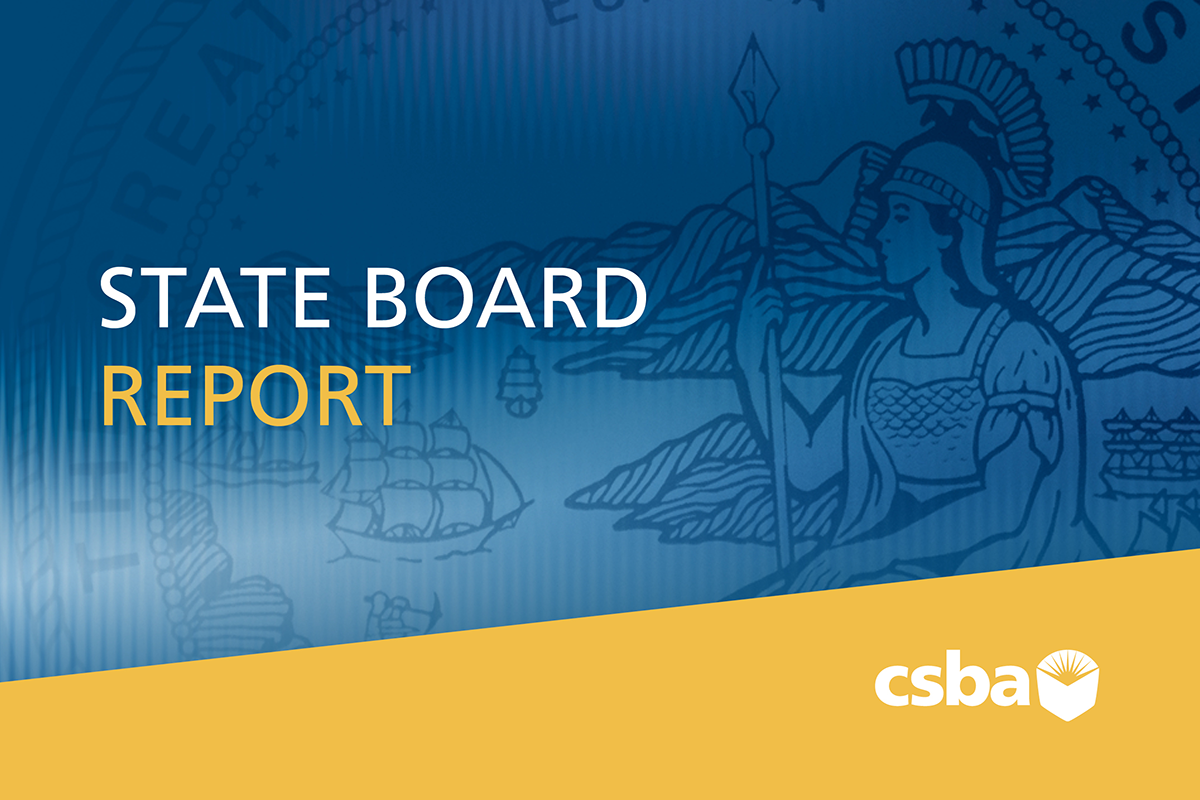Delegates of the 2021 Student Advisory Board on Education Conference held virtually from Oct. 30 through Nov. 1 presented key issues to the State Board of Education during its Nov. 3 meeting. Topics this year — which were researched and discussed during the conference — included diversity, equity and inclusion, civic engagement, student wellness, socioeconomic support, post-high school preparedness and equitable education.
SBE staff and the board’s student member may review and develop responses to the SABE proposals, which also may be considered at a future SBE meeting if they are within the jurisdiction of the board.
One topic that provoked significant board input was the first priority outlined by San Marcos Senior High School student Kavya Suresh: diversity, equity and inclusion. Through extensive discussion, the Student Advisory Board on Education identified that California faculty, district staff and board members are not adequately prepared to address matters pertaining to diversity, equity and inclusion. As a result, students are not taught the importance of these topics, thus contributing to minority students receiving unequal support from the education system.
Suresh shared her own experiences of teachers pausing before reading her name out loud only to announce, “it’s too complicated, so who is K-A-V-Y-A?” in front of the whole class, and of being told by teachers and other school staff at the age of 5 that her English would never be good enough — comments she said damaged her self-esteem and enabled her peers to be racist and xenophobic without consequence.
To combat the problem, the student advisory board advised the SBE to work with the California Department of Education’s Professional Learning Support Division to create a comprehensive framework for diversity, equity and inclusion professional development training for all K-12 faculty, district staff and board members in the state to be incorporated into the Quality Professional Learning Standards.
“It’s critical that we provide these necessary tools for all educators to practice anti-discrimination — especially in early education — to promote empathetic teacher–student relationships,” Suresh said. “By encouraging educators to reimagine their instructional practices and actively combat discrimination, we can empower marginalized students to be advocates for their own education.”
SBE student member Rana Banankhah was among several board members who expressed support for targeted professional development. Banankhah recalled her own experiences being called a terrorist in elementary school by her peers, and the lackluster response when she reported these problems to teachers. In one instance, she was told by her teacher “they were just kidding” and that she “shouldn’t take it too seriously.” At no point did her peers receive an explanation of why what they said was wrong, she said.
“The more I’ve talked to students of color and marginalized groups, the more I realize this is essentially a universal experience that so many students have, and it’s truly unfortunate to see,” Banankhah said. “I love the fact that you’re focusing on this issue through the lens of professional development for school staff because they have such a significant role in setting the tone in the classroom and really ensuring that all students feel included.”
Other key priorities outlined
Five additional priorities were laid out by student presenters addressing an array of challenges. The student advisory board found that many students only have access to counselors during junior and senior year when they start more rigorous courses, the college application process and standardized test prep. As a result, students are not adequately prepared for life beyond high school, be it college or career.
The SABE called for the creation of a digital handbook detailing practices high school counselors can use to support students with post-high school pathways. The handbook would focus on counselor conduct, including office hours and schoolwide meetings.
While recent efforts to improve or expand mental health services in schools as a result of the pandemic are appreciated, SABE said student mental health continues to be a pressing issue in the California education system. “Due to low prioritization of mental health in schools, students, parents and administrators are unaware of student wellness and ways to receive support. Therefore, receiving support for mental health is unaccessible [sic] and stigmatized,” students wrote in their annual report. SABE recommended SBE officials issue a strong recommendation to local school districts to create on-campus, school-based wellness centers, and that schools utilize pre-existing resources and blueprints from the Community Preventive Services Task Force, California School Based Health Alliance and others, which would provide professional help, education and overall support for student mental health.



